Send in the clones
Two years ago, Topps brought back the Archives brand for the fourth time (following 1982, 1993-1995, and 2001-2005), once again changing the formulation to fit the modern collecting landscape. 2013 brought a few key changes to Archives, some of which were kept in 2014’s iteration along with a lot of significant additions. In the end though, 2014 saw the smallest autograph checklist ever in Archives and the least variety in card designs, with parallels attempting to make up the difference.
Card Design
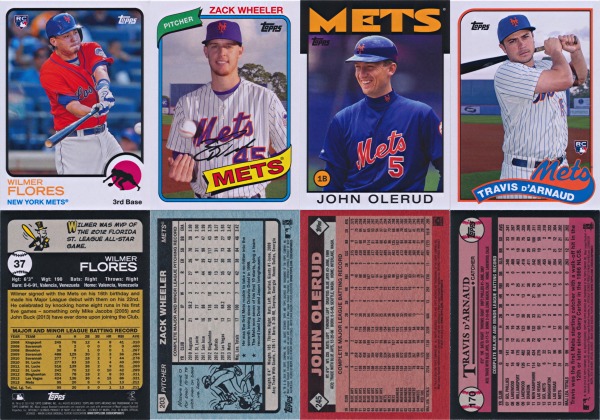
Like last year, 2014 Archives uses a more vintage card stock than the 2012 version. The years selected for this go-around are a bit odd. 1973 is a classic design that looks great with today’s printing technology. 1980 is also a solid design, but it was one of the featured designs in 2012 Archives. Too soon? And then there’s 1986… If there’s an ’80s Topps design to skip, that’s the one. 1989, also featured in the die-cut minis in 2014 Topps Series 1 and Series 2, is a reasonable choice considering its 25th anniversary, shared with the movie Major League. Unlike previous years though, the short prints did not feature any additional designs and were instead limited to these four. Even the Fan Favorite Autographs only added the base designs from 2013 Archives. I really don’t get what Topps was thinking with these choices.
Mets Selection
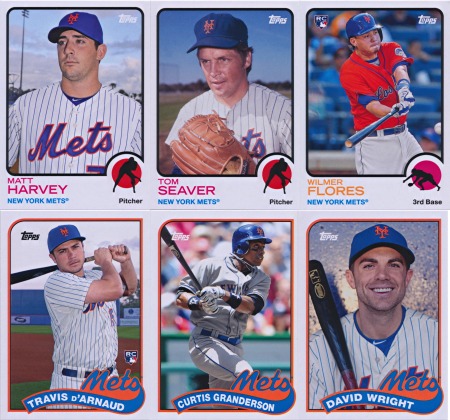
Six Mets made the cut in the 200-card Archives base set. Travis d’Arnaud and Wilmer Flores are the default Mets Rookies in everything this year, Tom Seaver and David Wright are franchise players, and Matt Harvey and Curtis Granderson are somewhere in the mix for additional filler. Sadly, there’s not much star power on this team, so this is about the best that could be expected. One disappointment is that only the 1973 and 1989 designs are featured, but the SPs take care of the rest. In terms of photography, most of these look like spring training photos, which look great on these designs. The Wilmer Flores photo adds another to the list of Mets shown in Los Mets jerseys in 2014 Topps products. The Granderson though looks awful. And awfully familiar…
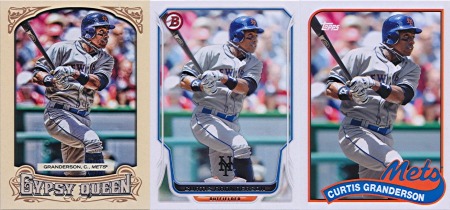
Once, twice, three times a photoshop
Really, Topps? You didn’t get even a single picture of Granderson in spring training? By the end of May, there is no excuse to be using lame photoshop jobs for a player signed last year. Series 1 and Heritage get a pass, Gypsy Queen is pushing it, but Bowman and Archives are simply unacceptable.
SPs
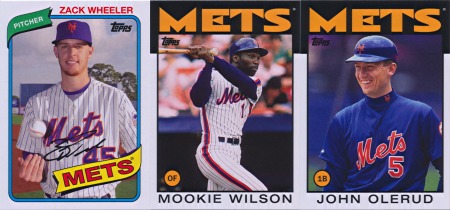
One other change to this year’s Archives SPs is the appearance of active players among the 50 SPs. Zack Wheeler is the lone Met in the 1980 design and Mookie Wilson and John Olerud have 1986 covered. With no alternate designs, many retired players appear in designs from outside their playing years, which was previously only seen in base cards. Also like the base cards, the SPs use the same pseudo-vintage card stock as the base set. The only things setting the SPs apart now are the card numbers and insertion ratios.
Parallels
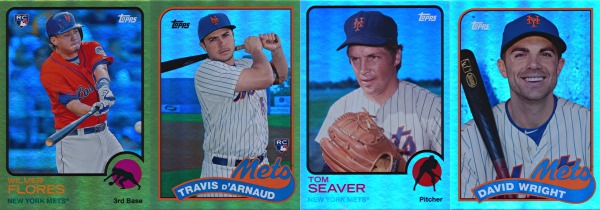
Like last year, all 200 base cards have a gold rainbow foil parallel numbered to 199. I still prefer the gold foil used in the 2012 Archives parallel, but I appear to be in the minority. New for 2014 and following in the silver trend seen in several other Topps products this year is a silver rainbow foil parallel numbered to 99. As in previous years, the SPs do not have parallels, which is a bit disappointing considering that most of the key RCs are SPs in 2014 Archives.
Mini Topps Deckle Inserts
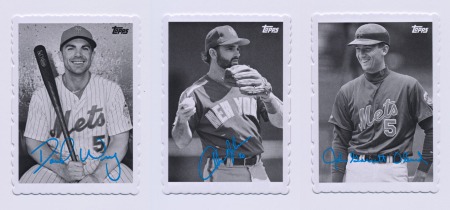
In 2012 and 2013, the Archives Mets team set has been heavy on SPs and light on inserts. 2014 flips that around with only 3 SPs and a whopping 10 inserts. Unfortunately, three of those are of the mini deckle variety. The whole mini thing is so overdone at this point that, short of bringing back a Topps Leaders product, I would prefer to see all of these minis retired permanently. On top of that, the deckle edge die-cut pattern around black and white photographs with blue facsimile signatures creates one of the ugliest looks in all of sports cards. And yet it keeps coming back. I’m glad to see more John Olerud Mets cards, but I could do without this one.
1987 All-Star Inserts
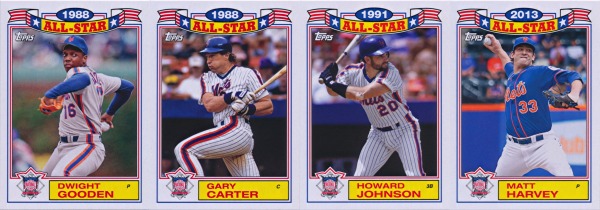
This one is even more loaded, with Dwight Gooden, Gary Carter, Howard Johnson, and Matt Harvey featured here. These use the familiar design of the All-Star Commemorative Set cards inserted in rack packs from the ’80s. Unlike those cards though, these do not use glossy card stock and instead use the same standard card stock as most of the rest of the inserts. With so much of an emphasis on recreating vintage styles, the lack of high gloss here is a big miss and keeps this great design from really popping.
Other Inserts
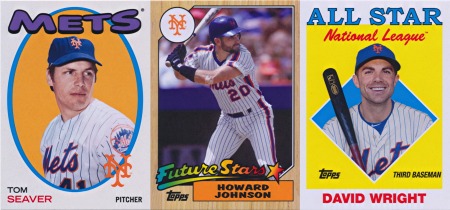
But that’s not all. After getting Seaver in the 1972 basketball design last year, 2014 Archives brings us Seaver in the 1971 hockey design. Is football up next in 2015? Sadly, no Mets were featured in the most interesting insert set, the die-cut wood Firebrand insert set. 2014 Archives also featured two retail-exclusive insert sets, 1987 Future Stars and 1988 All-Stars (named “Retail Chase” for some reason). Howard Johnson and David Wright represent the Mets in those sets, respectively.
Fan Favorites Autographs
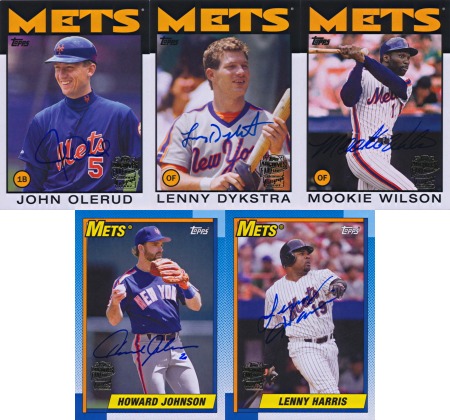
As always, the real draw among the common inserts is the Fan Favorites Autographs set. 2014 Archives features the smallest base autograph set of any Archives product with just 38 players signing this year. Five of those, John Olerud, Lenny Dykstra, Mookie Wilson, Howard Johnson, and Lenny Harris, are shown as Mets. Unlike the two previous Archives products, active players were also featured in this checklist, though none of them were Mets. Also unlike the previous Fan Favorites Autographs set, this year’s set features a few duplicate players from the 2012 and 2013 sets; Johnson and Wilson were also featured in 2013’s set and Olerud appeared in 2012’s set as a Blue Jay. Oddly, the lightened signature area that was introduced in 2013 was removed this time around, making the signatures harder to see (particularly on blue areas like Olerud’s jersey). The biggest change though would bring back something only previously seen in 2005.
Parallel Autographs
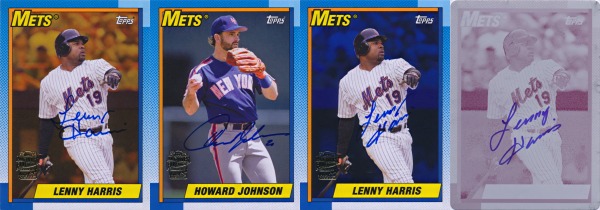
Parallels! The only time Archives autographs have had parallels before was back in 2005, and those were rainbow foil (similar to this year’s silver parallels) parallels numbered to 10. 2014 Archives went in a different direction with multiple tiers of colored border parallels: gold (retail exclusive, numbered to 50), silver (numbered to 25), purple (numbered to 10), sapphire (numbered to 5), and printing plates (four each numbered 1/1). Like we saw last year though, that doesn’t work for the 1990 design, so instead we got tinted background variants for those, which ranged from somewhat noticeable to nearly indistinguishable. The 1986 design fared somewhat better, but that’s really lipstick-on-a-pig territory:
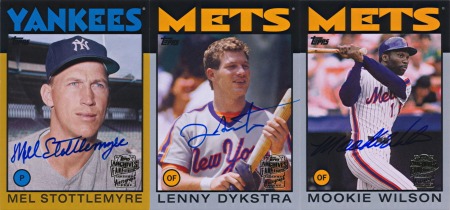
And so it goes. The other designs looked decent, but purple? Silver I get because of this year’s silver fetish, but purple is an odd choice. First 2014 Bowman introduces purple base parallels numbered to 10 alongside the usual purple ice parallels numbered to 10 (not to be confused with the unnumbered retail exclusive purple prospect parallels), now this. It’s an odd time for Topps to start being consistent with its parallel numbering.
Other Mets

Several notable former Mets appeared in the 2014 Fan Favorites Autographs set with other teams. Carlos Baerga and Orlando Hernandez had their first certified autographs since the ’90s and Don Zimmer had his final autograph card to be issued before his death. Rickey Henderson also had a limited number of cards issued as redemptions.
The Rest
In addition to the Fan Favorites parallels, 2014 Archives featured several other low-numbered Mets autographs. David Wright and Mookie Wilson were in the 1981 mini autographs set, combining an awful design with the hated mini format. Gary Carter and Howard Johnson had 1987 All-Star autographs while Wright was featured again in a Retail Chase autograph variant. Darryl Strawberry, who was featured as a Yankee in the 1967 Winners Celebrate box toppers, was featured as a Met in the autograph variant. And that rounds out the Mets in this year’s Archives.
The Verdict
From a retail standpoint, the reduced production run (about half of last year’s Archives, or about 800 hobby cases plus retail) and the hot-selling Major League autographs made 2014 Archives a successful product. From a collector standpoint though, the value was limited unless you were lucky enough to hit a big card. That’s the norm these days, so it isn’t a surprise. Some of the base autographs held decent value, but the parallels, rather than adding value, devalued many of the base autographs. All five of the base Mets autographs were readily available for under $10 and even some of the printing plate autographs could be had for less than $20. No matter how you look at it, adding more of the same can’t take the place of variety.
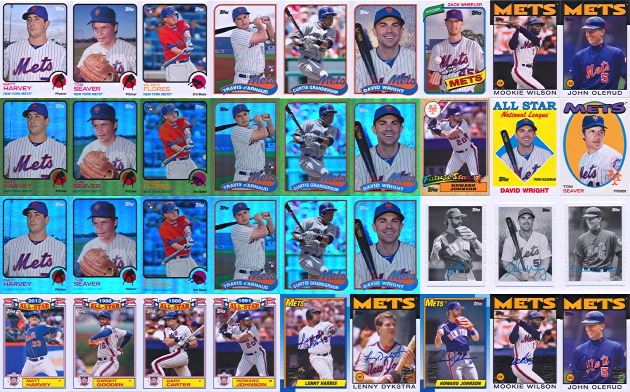
The Mets team set has a different composition this year but still comes in at about the same size as always. Fewer SPs, more inserts, fewer autographs, more parallels, and no relics. The first Lenny Harris certified autographs and the first John Olerud Mets autographs since 1999 were definite highlights, but Topps missed the mark on several fronts. Between the odd design choices (and lack of design variety), the lack of gloss on the 1987 All-Star inserts, the underwhelming overload of parallel autographs, the return of mini deckles, and the awful relic design (with no Mets at least), there’s a lot of room for improvement. And that’s not even getting into the absurdly tiny (4 cards!) Major League insert set and the last-minute cancellation of The Warriors cards. Two years after bringing back a classic, Topps is spinning its wheels more than realizing the potential of the Archives brand.
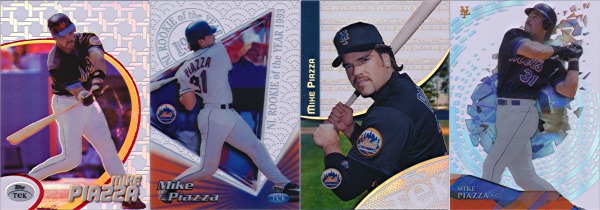 When we last checked in with Topps revivals of decades past, we saw the unenthusiastic return of Stadium Club. With a generic format, terrible photography, and no standout cards, it looked like Topps had pushed the modern-retro thing just a bit too far. After all, the Major League cards in Archives were a huge hit, Gold Label returned in a classy, though limited, form, and Finest had one of its best designs in more than 20 years. Stadium Club seemed to show that Topps was out of ideas, but they didn’t stop there. Topps dug back into the turn of the century well for one of its shortest-lived but fondest-remembered experiments: Tek.
When we last checked in with Topps revivals of decades past, we saw the unenthusiastic return of Stadium Club. With a generic format, terrible photography, and no standout cards, it looked like Topps had pushed the modern-retro thing just a bit too far. After all, the Major League cards in Archives were a huge hit, Gold Label returned in a classy, though limited, form, and Finest had one of its best designs in more than 20 years. Stadium Club seemed to show that Topps was out of ideas, but they didn’t stop there. Topps dug back into the turn of the century well for one of its shortest-lived but fondest-remembered experiments: Tek.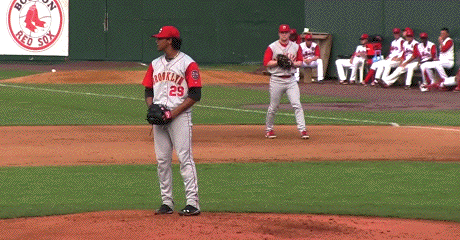
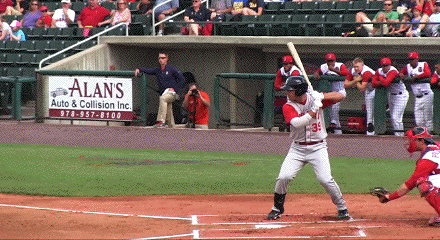
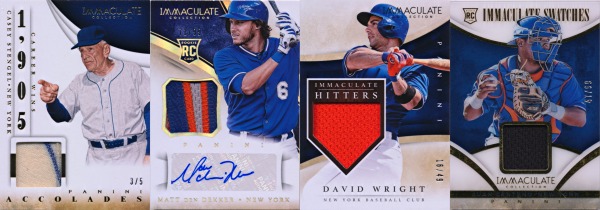
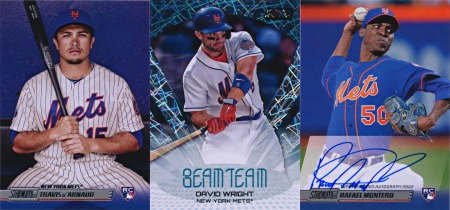













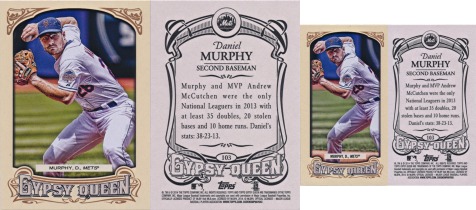
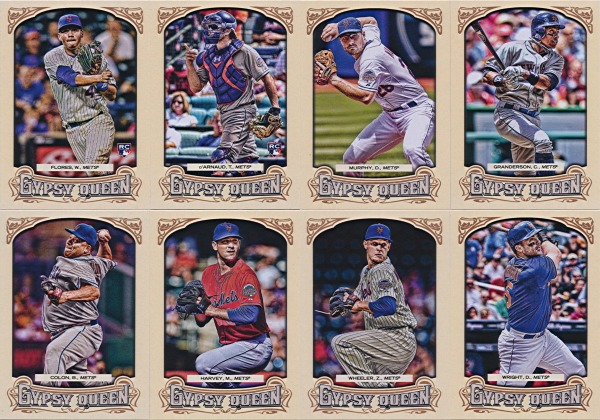
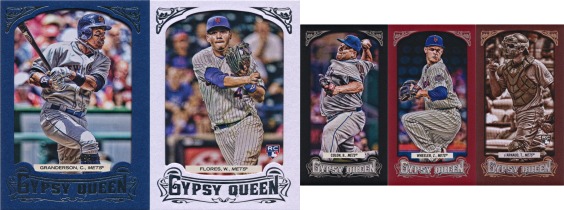
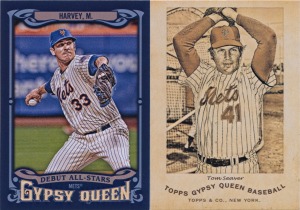
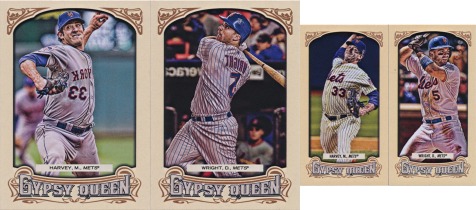
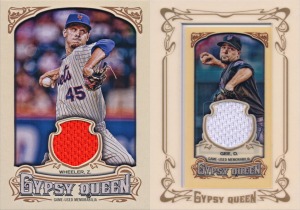
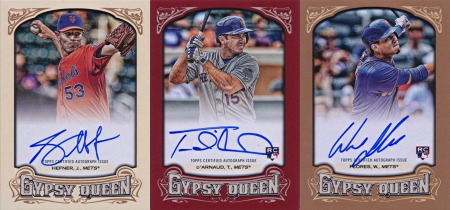
Recent Comments